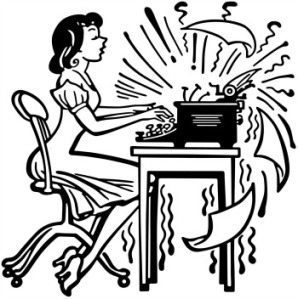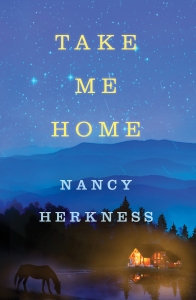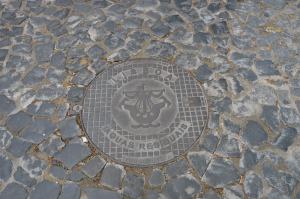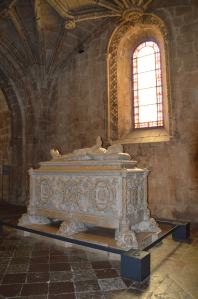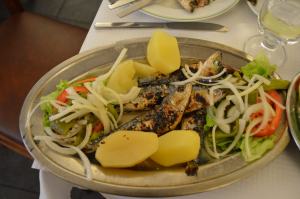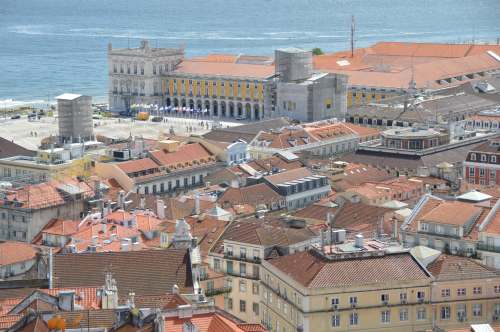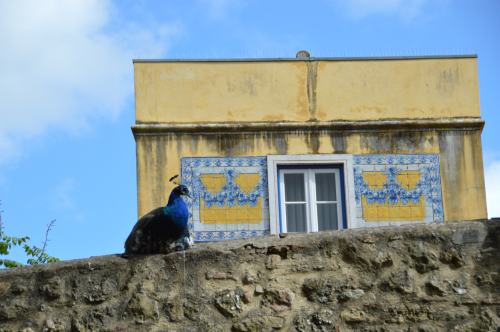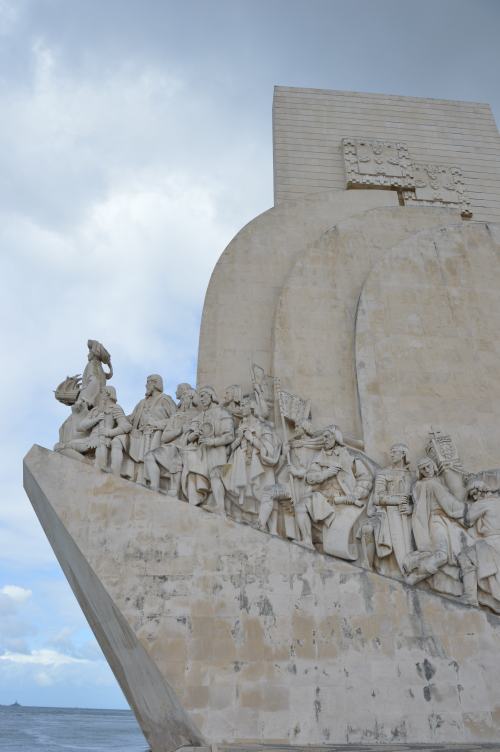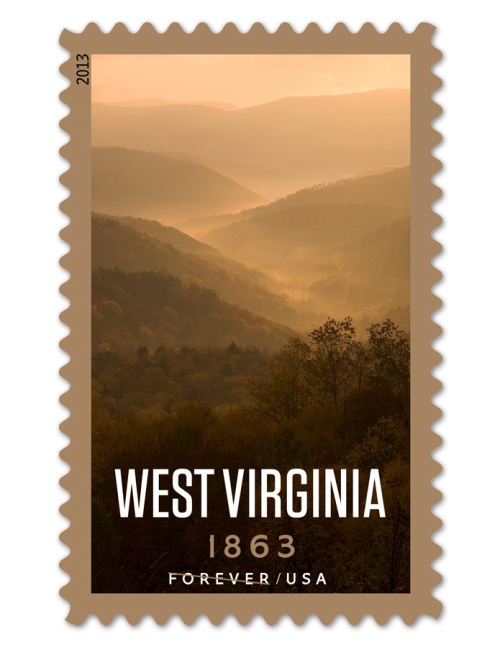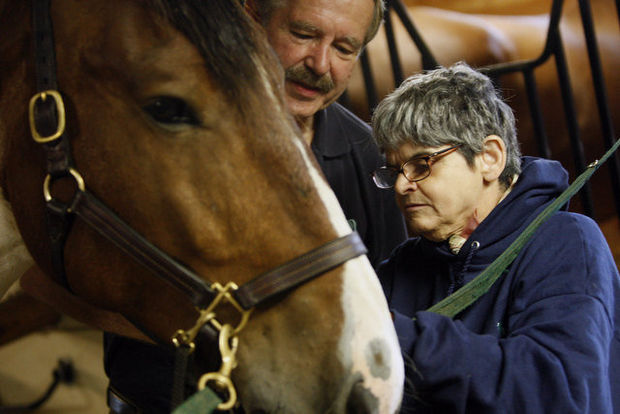Blog
Can you write 30,000 words in 28 days?
That’s known as a writing challenge, and I took it this February, participating in (and leading, for full disclosure) Jersey Romance Writing Month (JeRoWriMo).
I founded the challenge three years ago for the New Jersey Romance Writers because many of us liked the idea of National Novel Writing Month. However, it takes place in November when we are madly scrambling to prepare for the holidays. So for our challenge, I chose February, the month of lovers, and also the dead of winter when our members have fewer non-writing obligations.
I’m a slow-and-steady kind of writer generally. I need to think before I sit down at the keyboard. I don’t pour forth dozens of pages a day as some much-envied writers are capable of doing. Taking on a writing challenges forces me to push myself beyond my usual comfort level. And when I do that I learn things about myself as a writer.
This year, I did something I thought I could never, ever do. I worked on two stories at the same time!
What led to this breakthrough?
I started the challenge expecting to finish the Christmas novella I had already written several chapters of. It was going slowly, and I thought JeRoWriMo would give me the kick I needed to get it done. Instead, I found myself struggling, bogged down in key moments that should have been flowing easily.
In desperation, I wrote the first chapter of a new book I had proposed to my publisher. It was so much fun that I wrote the next scene. And the next. My fingers were flying across the keyboard again. What a feeling! I hit my 30,000-word goal at a gallop.
And suddenly, I wanted to get back to my novella. My subconscious had been working silently on the emotional underpinnings of those critical scenes, and now I knew where they should go.
That’s why I recommend taking on a writing challenge: desperation makes you try new things. When you try new things, you discover strengths you didn’t know you had.
(On the purely practical side, I’ve made noticeable progress on two manuscripts.)
Apology from a bad blogger
Wow! I need to blog more. I just noticed that my last entry was from nearly a month ago. So why DON’T I blog?
Excuse #1: It uses the almost the same writing muscles as fiction does, and I need to conserve energy for writing my books. Because those are what folks really want to read. And they pay the bills.
Excuse #2: It takes time, a commodity we all have precious little of.
Excuse #3: There’s nothing I have a burning desire to talk about. Not every day in my life is noteworthy…or at least not noteworthy enough to write several paragraphs about. And I don’t want to bore my blog readers with prosaic posts. Facebook is more suited to my “short thought” days.
Excuse #4: My children were home for the holidays and I wanted to hang out with them.
Excuse #5: My editor and/or agent will notice that I am not doing my copy-edits (which are due in three days) and politely point out that those are more important, if less fun.
Excuse #6: I’m reading my Facebook news feed.
Okay, the excuses are getting pretty weak, so it’s time to stop procrastinating and go back to my copy-editing.
I’ll be back when a) I’ve turned in my copy-edits, and b) I am breathless with the need to share my brilliant thoughts with you. Bet you can’t wait!
Anyone out there have some better excuses than mine?
Sale: TAKE ME HOME is $1.99 on Kindle!
My publisher is giving my readers a holiday gift. They’ve lowered the price of TAKE ME HOME to $1.99 on Kindle until December 28th. So treat yourself to your own little gift. Escape to the mountains for a few hours and find out how a whisper horse might change your life. It’s hometown romance with heart…and heat!
Click here to buy it for your Kindle.
You’re editing your book AGAIN?!
Non-writers are always shocked when I tell them I’m doing edits yet again (as I am now for The Place I Belong). No, it’s not that I’m a particularly sloppy writer. It’s just the process that every book goes—or should go—through. The more eyes you can get on a manuscript, the more polished it will be when it’s published. Let me explain the stages of editing.
Step 1: Self-editing. This is what I do before I turn the book into my editor at Montlake Romance for the first time. It helps that I have a fabulous critique group where I get lots of constructive suggestions for improving the book. However, they only see about a third to half the book before I have to hand it in to the publisher (those nasty deadlines!). The rest is just little ole me reading my own work with as critical and detached an eye as I can bring to something I just sweated bullets over for the past nine months.
Step 2: Developmental editing (also known as line editing, confusingly enough). The developmental editor reads through the whole book with the big picture in mind. Are the characters’ emotional arcs consistent and satisfying? Are there any glaring plot holes? Are there any places where my writing is not up to snuff? Have I brought in the secondary characters in an effective way? She’s not worried about the proper use of commas and italics, although she often notices when I overuse a particular word (such as “locked” or “deep”, my two favorites in the current manuscript).
My D.E. and I will send the manuscript back and forth one or two times as we work through the issues she’s spotted. At this stage, I can still make major changes to the book if my developmental editor and I feel they are warranted. Then we return it—better and stronger!—to my supervising editor at Montlake so it can go to the copy editor.
Step 3: Copy editing. This is where the nit-picking begins (but doesn’t end). Commas, paragraphs, spelling of proper names, capitalization…all that gets scrutinized under a microscope. In addition, the copy editor checks that the characters’ eye color doesn’t change mid-book. Or that I don’t make some poor child go to school ten days in a row (yes, my copy editor caught that in Shower of Stars).
Timelines and continuity are checked carefully. Overuse of words and/or images is noted. Locations are vetted. If they’re real, is my description accurate? If they’re fictional, is my portrayal consistent throughout the book and the series? I can make significant changes at this stage, but I try not to since that would precipitate another round of copy editing.
I work through the annotated manuscript to fix all the problems the copy editor has marked. I confess to letting the experts handle the commas; whatever they say is right, I just agree to. I knew the punctuation rules once, but they’ve slipped my overstuffed mind by now. However, word choice is something I sweat over when it needs changing. I think that’s my training as a poet coming to the fore. When you can only use a few words on a page, they take on a huge importance.
There are times when I exercise my right as the author of the book to “stet” a suggested change. That means I want to keep it the way I wrote it. The folks at Montlake have a great deal of respect for their authors, so this is never a problem with them.
I return the polished-up manuscript to my supervising editor who forwards it to the formatter. This is where it gets turned into what you’d recognize as a book with page numbers and pretty chapter headings. In this form, the pages are called “galleys.”
Step 4: Proofreading. I get the galleys after the Montlake proofreader goes over them and marks his/her corrections. At this point, I am only allowed to correct actual mistakes that somehow snuck in during the formatting or weren’t caught in the copy editing stage. (It seems impossible but this does happen.) No major changes can be made because that would require reformatting the book. Again, I’m allowed to say no to changes the proofreader suggests because I’m the author. Love that!
Finally, I am done with the editing. Someone at Montlake does one more pass through the galleys after they receive my annotated version.
Do I get really tired of seeing that same book over and over again? Oh, yeah! However, this tedious process is what allows me to sleep at night, knowing my editors and I have done our level best to make the book as perfect as it can be.
Treadmill Desk Fame
Who knew my do-it-yourself treadmill desk would make me famous? Okay, maybe that’s a slight exaggeration, but the folks at a great website called Work While Walking saw my June 26th blog post and asked to add it to their “Water Cooler” blog. I included a couple of updates to the post since I’m now a more experienced write-walker. Here’s the link:
http://www.workwhilewalking.com/write-walking-notes-from-my-treadmill-desk
If you’re interested in your own treadmill desk, Work While Walking has a wealth of information about all levels of desks. I’ve been learning new things while browsing around it. Mosey on over and check it out!
Bom dia, Lisboa!
 For his 21st birthday trip, Super Son decided he wanted to go “someplace different”, so he chose Portugal. The tour he liked had two parts: Lisbon and its environs and the Douro River. So we packed our bags and took off for the country of the great explorers.
For his 21st birthday trip, Super Son decided he wanted to go “someplace different”, so he chose Portugal. The tour he liked had two parts: Lisbon and its environs and the Douro River. So we packed our bags and took off for the country of the great explorers.
Our first stop was Lisbon, the capital city. Portugal has a long sea-faring history. Their national hero is Vasco da Gama, the first European to reach India entirely by sea.
Everything is decorated with maritime images, even their manhole covers.
They have a whole architectural style, the Manueline, that features ropes, anchors, seashells, etc. The Torre de Belém is considered one of the finest examples of the style:
Here’s a detail of the Torre. See the rope design?
We visited a beautiful church which holds the tomb of the “Shakespeare of Portugal.” Luís Vaz de Camoês wrote an epic poem, Os Lusíadas, about the great Portuguese explorers and the history of the Portuguese people. Every high school student in Portugal considers it torture to read, but it’s required.
Being oriented to the ocean, the folks in Lisbon eat lots of seafood. Sardines are a staple on every restaurant menu so I had to try them. Not my favorite dish.
These delicious little custard pastries, called pasteís de nata, make up for the sardines.
Handsome Husband and I journeyed up to the Castelo de São Jorge for a bird’s eye view of Lisbon.
Peacocks roam the castle grounds. This one posed nicely in front of some of the beautiful tile Portugal is famous for. Many houses and building are decorated with it, both inside and outside.
Another tribute to the great sea-going explorers is the Padrão de Descombrimentos (Monument to the Discoveries) on the bank of the Tagus River, near the Torre de Belém. Prince Henry the Navigator is the fellow out in front holding the ship model.
I will end our tour of Lisbon with a quote from the poet Camoês’ epic poem which describes the monument well:
Arms and the Heroes, who from Lisbon’s shore,
Thro’ seas where sail was never spread before,
Beyond where Ceylon lifts her spicy breast,
And waves her woods above the watery waste,
With prowess more than human forc’d their way
To the fair kingdoms of the rising day.
I’m having a party! Join the fun!
Join my Country Roads Launch Party on Facebook! I have prizes, special guests, trivia, and lots of fun. To accept my invitation, just click on one—or both!—of the parties below:
Country Roads Afternoon Launch Party
Tuesday, September 17th from 2:00 – 4:00 p.m.
Country Roads Evening Launch Party
Tuesday, September 17th from 7:00 – 9:00 p.m.
I hope to see you on September 17th!
Yeehaw! My home state got its own stamp!
I walked into the post office this morning and saw my home state of West Virginia on the new stamp display (so of course I bought a sheet). It’s our 150th birthday of statehood! How pretty is this mountain sunrise?!
Here’s what the U.S.P.S. has to say about the mountain state’s commemorative stamp:
With this stamp, the U.S. Postal Service celebrates 150 years of West Virginia statehood. Admitted to the Union on June 20, 1863, in the midst of the Civil War, West Virginia is one of only two new states created during the war and the only one created by separation from a Confederate state. Located entirely within the Appalachian Highlands, West Virginia is now known as the Mountain State. Its official motto reflects the realities of topography as well as its individualistic spirit: montani semper liberi, “mountaineers are always free.”
The stamp features a photograph by West Virginia photographer Roger Spencer showing an early morning view looking east from the Highland Scenic Highway (Route 150) in Pocahontas County, West Virginia, within Monongahela National Forest.
Today, nearly 1.9 million people call West Virginia home. With coal as the state’s most abundant natural resource, around 30,000 West Virginians work in the coal-mining industry, helping to produce more than one-tenth of the country’s supply, and the natural gas and oil industries, while less visible, are essential. In keeping with the current state slogan, “Wild and Wonderful,” tourism is also vital to the West Virginia economy, with mountains and rugged wilderness drawing visitors from across the country and around the world for hunting, fishing, skiing, mountain biking, rock climbing, and whitewater rafting.
Yup, it’s almost heaven.
What is it about horses?
Why did I create the idea of a “whisper horse”, a special horse who helps my characters deal with their problems?
In this article about a therapeutic riding program, Octavia Brown, the director puts it very well:
“A horse never judges and it never thinks you’re different.”
Isn’t that the kind of confidant we all would like to have?
via Equine therapy: N.J. program has helped the disabled ride horses for 10 years | NJ.com.
Good luck using your cell phone here!
Did you know the United States enforces strict limits on the placement and broadcast power of cell phone towers and other transmitters in over 13,000 square miles in the Appalachian Mountains of West Virginia? It’s true!
Why this National Radio Quiet Zone? It’s to assist the Green Bank Telescope that searches the radio universe for targets like star-forming clumps of gas. Being fascinated by all things having to do with outer space, I went to visit once and was thrilled when one of the giant telescope dishes actually began to move, slowly and majestically, as I watched. I don’t know what they were aiming it at, but I felt as though I was part of the exploration.
Evidently the Naval Information Operations Command is nearby and is used by the N.S.A. to intercept international communications, so they also need peace and quiet.
Interestingly, people who believe they suffer from sensitivity to electromagnetic fields like living there as well.
I’ll bet their cell phone signal is really weak though!

